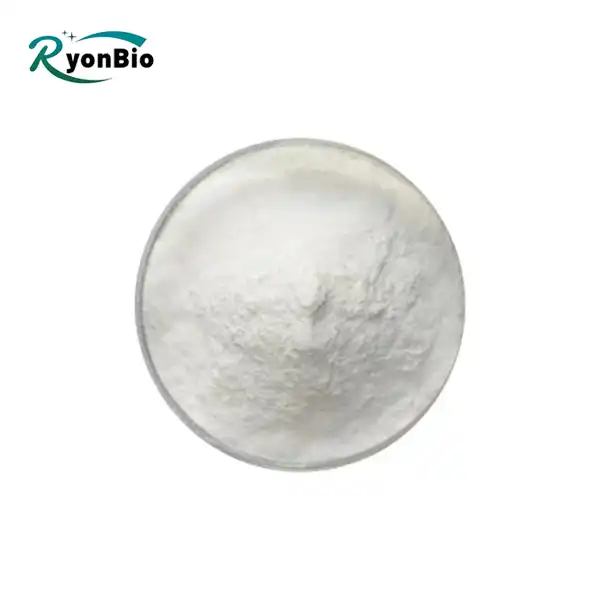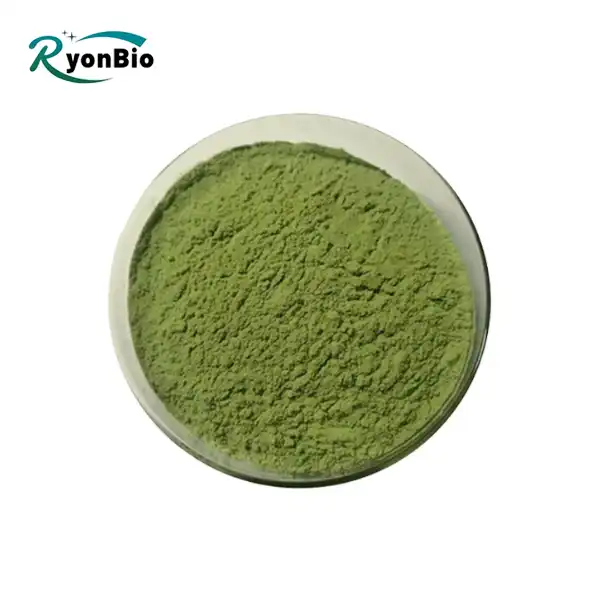Due to its capacity to boost bile flow and safeguard liver cells, Ursodeoxycholic acid (UDCA) is frequently prescribed for a variety of liver conditions. As with any medication, UDCA may cause side effects that patients and healthcare providers should be aware of, despite the fact that it is generally regarded as safe. In order to effectively manage treatment and guarantee patient safety, it is essential to comprehend these side effects.

What are the common side effects of Ursodeoxycholic acid (UDCA)?
UDCA is known to cause mild to moderate gastrointestinal symptoms in some patients. Common side effects include:
Gastrointestinal Disturbances
Ursodeoxycholic acid (UDCA) commonly causes gastrointestinal disturbances, such as diarrhea, abdominal discomfort, and nausea. Diarrhea is the most frequently reported side effect and tends to occur early in treatment. Abdominal discomfort may manifest as bloating or cramping. Nausea can also occur but typically improves over time as the body adjusts to the medication. These symptoms are usually mild to moderate and often do not require discontinuation of Ursodeoxycholic Acid Powder.

Headache
Headache is a less common side effect of UDCA treatment. Some patients may experience mild headaches, which can occur sporadically or persistently during the course of treatment. Headaches associated with UDCA are generally mild and manageable with over-the-counter pain relievers if needed. It is important for patients to inform their healthcare provider if headaches become severe or frequent.
Dizziness
Infrequently, UDCA can cause dizziness, particularly when initiating treatment or adjusting the dosage. Dizziness may be mild and transient, resolving as the body adapts to the medication. Patients should take precautions such as avoiding sudden changes in posture or activities that require alertness until they understand how UDCA affects them. If dizziness persists or worsens, medical advice should be sought.
Hair Loss
Although rare, some patients may experience hair loss while taking UDCA. Hair loss associated with UDCA treatment is usually reversible and resolves upon discontinuation of the medication. It may present as increased hair shedding or thinning. Patients experiencing significant hair loss should consult their healthcare provider for further evaluation and management recommendations.
Muscle or Joint Pain
UDCA can occasionally cause mild muscle or joint pain in some patients. These symptoms are typically transient and resolve without intervention or upon continued use of the medication. Patients may notice muscle aches or discomfort in specific joints. If muscle or joint pain becomes persistent or severe, healthcare providers should be informed to assess whether alternative treatments or adjustments to UDCA dosage are necessary.
Skin Rash
Allergic reactions such as skin rash can occur, although they are uncommon. Patients should seek medical advice if they develop any signs of allergic reaction while on Ursodeoxycholic Acid Powder.
Understanding these common side effects can help patients and healthcare providers anticipate and manage potential issues that may arise during UDCA treatment.
Are there any serious risks associated with UDCA use?
While UDCA is generally well-tolerated, there are rare but serious risks that patients should be aware of:

Liver Function Abnormalities
UDCA may cause abnormalities in liver function tests, especially in individuals with pre-existing liver conditions. Regular monitoring of liver function is recommended to detect any potential adverse effects early.
Worsening of Liver Disease
In rare cases, UDCA treatment may exacerbate symptoms or worsen liver function in certain liver disorders. Healthcare providers carefully evaluate the benefits versus risks before prescribing UDCA in such cases.
Allergic Reactions
Although uncommon, allergic reactions to Ursodeoxycholic Acid Powder can occur and may manifest as skin rash, itching, or swelling. Immediate medical attention is necessary if any signs of allergic reaction develop.
Pancreatitis
Rarely, UDCA has been linked to pancreatitis, which is an inflammation of the pancreas. Patients ought to be checked for side effects like serious stomach agony, queasiness, and retching, which might show pancreatitis.
Drug Interactions
UDCA may interact with other medications, potentially affecting their efficacy or increasing the risk of side effects. Patients should inform their healthcare providers about all medications they are taking to avoid potential interactions.
Understanding these serious risks allows healthcare providers to make informed decisions regarding UDCA therapy and monitor patients appropriately to mitigate any potential complications.
How should patients manage potential side effects of UDCA?
Managing side effects of UDCA involves several strategies to enhance patient comfort and treatment adherence:
Gradual Introduction
Starting UDCA at a lower dosage and gradually increasing it can help minimize gastrointestinal side effects such as diarrhea and abdominal discomfort.

Dietary Adjustments
Making dietary changes, such as increasing fiber intake and staying hydrated, may help alleviate gastrointestinal symptoms associated with Ursodeoxycholic Acid Powder.
Medication Timing
Taking UDCA with meals or at specific times of the day as recommended by healthcare providers can reduce the likelihood of gastrointestinal upset.
Symptom Monitoring
Patients should monitor and report any side effects to their healthcare providers promptly. Early intervention can prevent complications and improve treatment outcomes.
Regular Follow-up
Scheduled follow-up appointments allow healthcare providers to assess treatment efficacy, monitor for adverse effects, and adjust treatment plans as needed. By actively managing potential side effects, patients can optimize their experience with UDCA therapy and improve overall treatment outcomes.
Conclusion
In conclusion, while Ursodeoxycholic acid (UDCA) is generally safe and effective for treating various liver conditions, it is essential for patients and healthcare providers to be aware of its potential side effects and risks. Common side effects such as gastrointestinal disturbances are manageable with proper medication management and lifestyle adjustments. However, rare but serious risks including liver function abnormalities and allergic reactions require careful monitoring and prompt medical attention if they occur. By understanding these considerations and implementing appropriate management strategies, patients can safely benefit from UDCA therapy under the guidance of healthcare professionals.
If you want to learn more about this kind of Ursodeoxycholic Acid Powder, welcome to contact us at kiyo@xarbkj.com.
References
1.Lindor KD, Kowdley KV, Luketic VA, et al. High-dose ursodeoxycholic acid for the treatment of primary sclerosing cholangitis. Hepatology. 2009;50(3):808-814.
2.European Association for the Study of the Liver. EASL Clinical Practice Guidelines: The diagnosis and management of patients with primary biliary cholangitis. Journal of Hepatology. 2017;67(1):145-172.
3.National Institute for Health and Care Excellence (NICE). Ursodeoxycholic acid for primary biliary cholangitis. Technology appraisal guidance [TA443]. Published August 2017.
4.European Medicines Agency. Ursofalk: EPAR - Product Information. Last updated July 2021.
5.Poupon RE, Lindor KD, Pares A, et al. Combined analysis of the effect of treatment with ursodeoxycholic acid on histologic progression in primary biliary cirrhosis. Journal of Hepatology. 2003;39(1):12-16.
6.Mayo Clinic. Ursodiol (Oral Route). Mayo Clinic Patient Care & Health Information. Updated April 2024.






